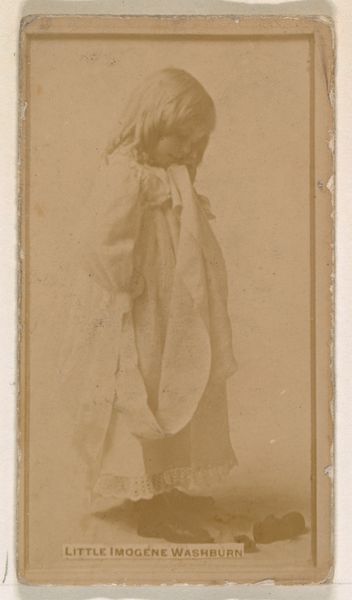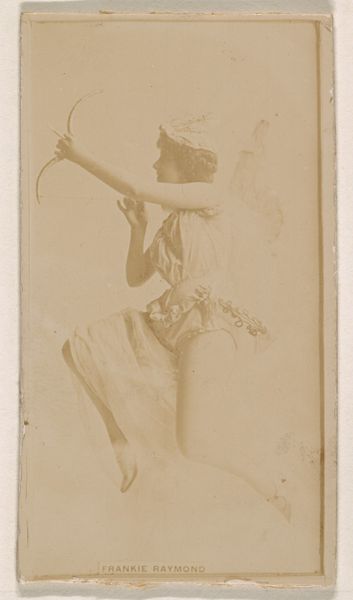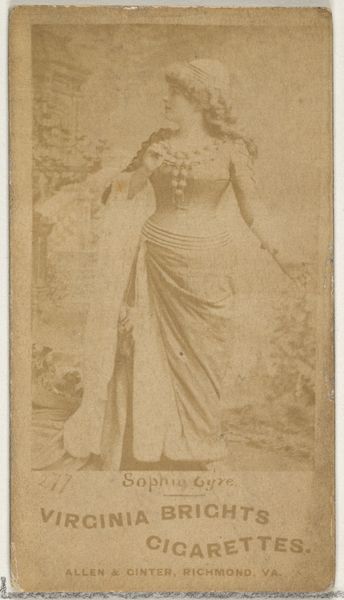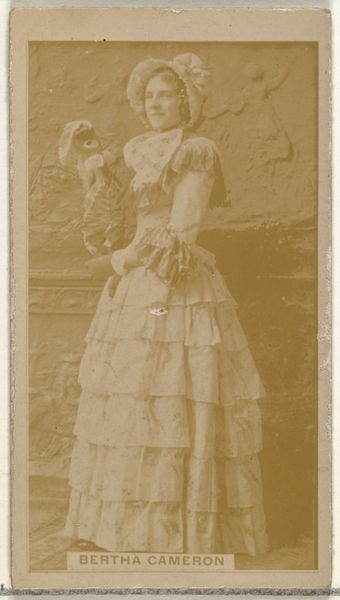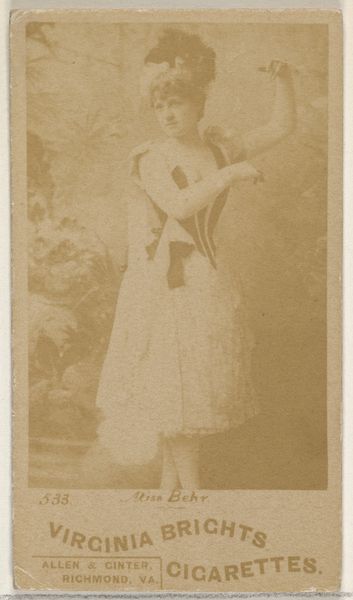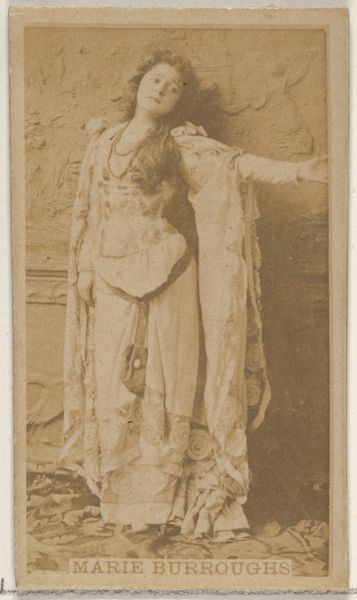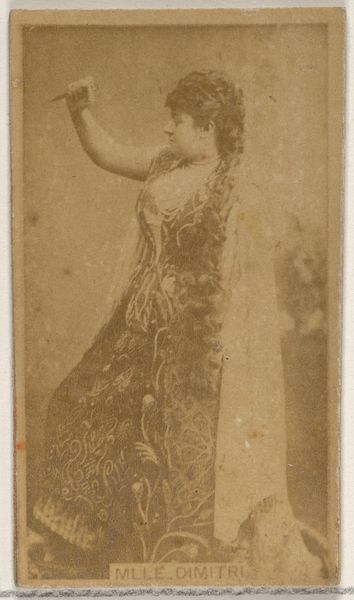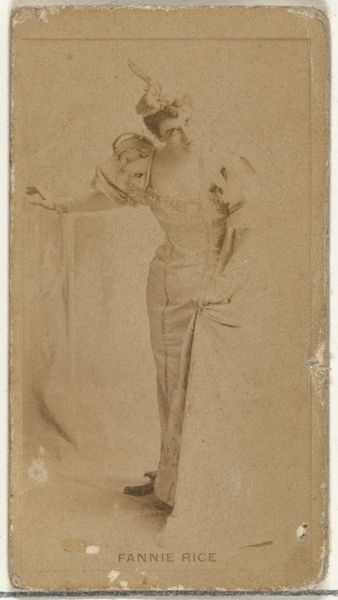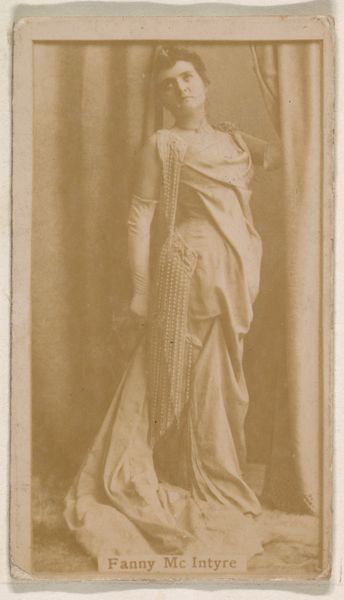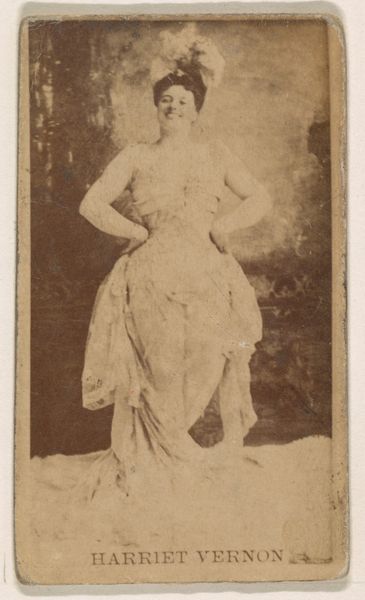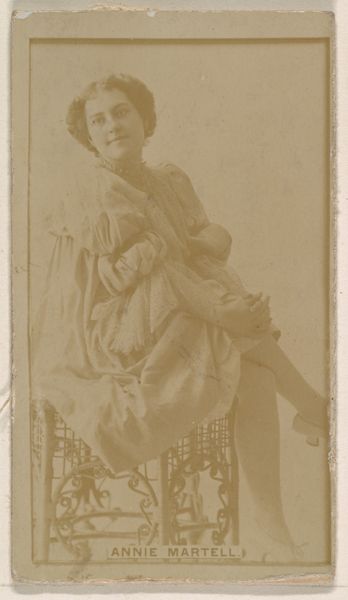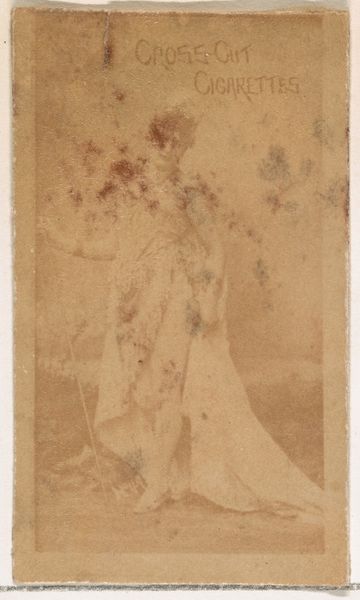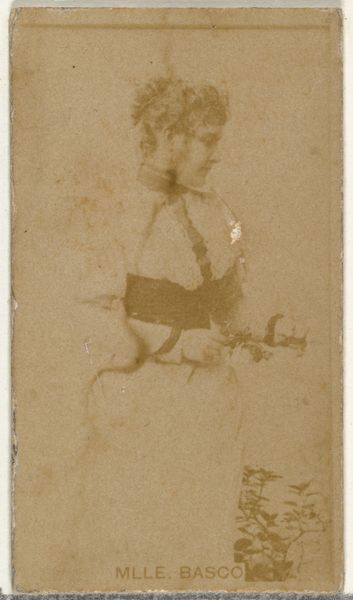![[Actress posing in patterned gown], from the Actors and Actresses series (N145-8) issued by Duke Sons & Co. to promote Duke Cigarettes by W. Duke, Sons & Co.](/_next/image?url=https%3A%2F%2Fd2w8kbdekdi1gv.cloudfront.net%2FeyJidWNrZXQiOiAiYXJ0ZXJhLWltYWdlcy1idWNrZXQiLCAia2V5IjogImFydHdvcmtzLzlmYTU2Mjc2LTgzZGEtNGMwYi1hMDEzLWNjMGUwNjg1MTExMi85ZmE1NjI3Ni04M2RhLTRjMGItYTAxMy1jYzBlMDY4NTExMTJfZnVsbC5qcGciLCAiZWRpdHMiOiB7InJlc2l6ZSI6IHsid2lkdGgiOiAxOTIwLCAiaGVpZ2h0IjogMTkyMCwgImZpdCI6ICJpbnNpZGUifX19&w=3840&q=75)
[Actress posing in patterned gown], from the Actors and Actresses series (N145-8) issued by Duke Sons & Co. to promote Duke Cigarettes 1890 - 1895
0:00
0:00
print, photography
#
portrait
# print
#
photography
Dimensions: Sheet: 2 11/16 × 1 3/8 in. (6.8 × 3.5 cm)
Copyright: Public Domain
Curator: Looking at this delicate print from around 1890 to 1895, created by W. Duke, Sons & Co., part of their "Actors and Actresses" series. It was actually a promotional item for Duke Cigarettes. Editor: My immediate impression is of an era defined by constructed images. There is something ephemeral about the portrait. The soft sepia tones evoke both nostalgia and a sense of remove. Curator: It speaks to the objectification and commercialization of women in performance, aligning with feminist critiques of early advertising and image production. It represents a societal trend where a woman's identity is being marketed in correlation with this patriarchal company that produces tobacco. Editor: Interesting point. Focusing on symbolism, consider the gown. Its intricate pattern likely had significance at the time. Also, think of the power of a patterned gown that could possibly represent femininity and grace while simultaneously representing social power through style and image. Curator: Yes, but think of that contrast through the labor that created that fabric and also that in order to see this image, people have to purchase cigarettes. Who benefits in this circumstance? It's an analysis of labor. Editor: Right, though consider the context of these cards. As collectible items, they facilitated a cultural memory, linking the actress’s image to the brand in the public imagination. Curator: Exactly! They perpetuate a certain ideal, framing feminine success within capitalist structures. What this image really says, through that framework, is who the people in power are, as it highlights the disparities within society. Editor: It becomes a curious object then; a reminder of fleeting fame captured in a now faded medium, a confluence of entertainment, marketing, and early photography that reminds us that what we know as truth or an image to emulate is fleeting. Curator: Absolutely, reflecting how image is an incredibly strong yet easily controlled, capitalist tool. Editor: Such a dialogue reminds me about the power that simple portraits can hold as mirrors and lenses to see social truths and personal impressions of memory and identity.
Comments
No comments
Be the first to comment and join the conversation on the ultimate creative platform.
